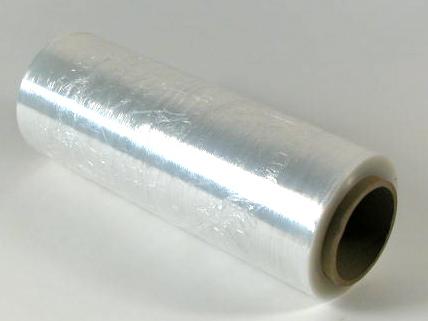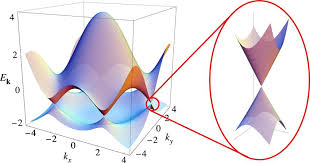1/ Mirrors are usually made out of metals, which don't allow electric field inside their bulk and therefore reflect light. But can you make a mirror out of transparent materials?
It turns out that you can, and the physics of "transparent mirrors" has an analog in graphene.
It turns out that you can, and the physics of "transparent mirrors" has an analog in graphene.
2/ The idea is to make a stack of different transparent materials. At each interface, there is a finite probability that the light will be transmitted vs. reflected. The more interfaces there are, the harder it is for light to pass through them all.
3/ A common situation is that one of the two materials is just air: at each air/material interface the light can be reflected back. This is why a roll of saran wrap is shiny like a mirror (it has many plastic-air interfaces), even though each layer is transparent.
4/ I will say that the math of this problem is far from obvious! There are infinitely many paths that a ray of light can take through a material, reflecting back and forth at each interface. And light is a wave, which can exhibit phase cancellation at each interface.
5/ This problem is actually over 200 years old, but it wasn't until the 1990s that it was really solved, by Berry and Klein:
https://iopscience.iop.org/article/10.1088/0143-0807/18/3/017/meta
The key is to make an analogy with Anderson localization, which describes the non-propagation of waves in a disordered landscape.
https://iopscience.iop.org/article/10.1088/0143-0807/18/3/017/meta
The key is to make an analogy with Anderson localization, which describes the non-propagation of waves in a disordered landscape.
6/ In graphene, electrons behave like light: their energy is proportional to the inverse of their wavelength. Disorder in their velocity (as happens, for example, when two graphenes have a spatially-random twist between them) acts like a disordered index of refraction.
7/ The key difference is that in graphene an electron cannot reflect when it comes to an interface at a perfectly perpendicular angle.
This is called Klein tunneling, or the "Klein paradox". It arises because the backscattered wave function is orthogonal to the transmitted one.
This is called Klein tunneling, or the "Klein paradox". It arises because the backscattered wave function is orthogonal to the transmitted one.
8/ What this means in graphene is that if you have a line-like pattern of disorder, electrons at normal incidence are transmitted, while light at an angle is reflected.
You've made a "mirror" that is shiny when seen at an angle and transparent when you look directly at it!
You've made a "mirror" that is shiny when seen at an angle and transparent when you look directly at it!
9/ Together with my student @The_Correlator, we have examined this effect in twisted bilayer graphene in a new paper: https://arxiv.org/abs/2008.05481
It turns out that the physics is much richer still, and may lead to a new method for filtering electrons by energy or by spin.
It turns out that the physics is much richer still, and may lead to a new method for filtering electrons by energy or by spin.
10/10 Congratulations to @The_Correlator on his first paper!

 Read on Twitter
Read on Twitter





